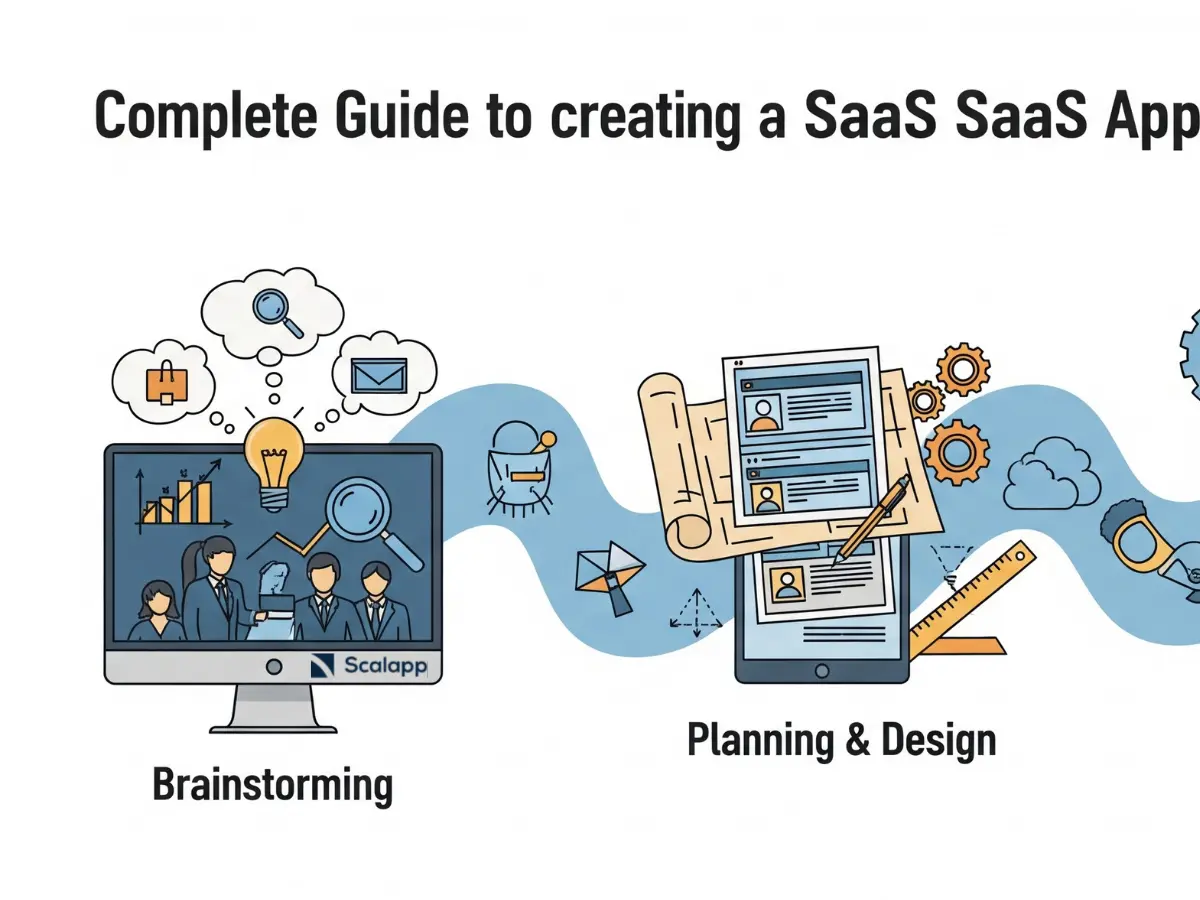
The market for SaaS application creation (Software as a Service) is experiencing spectacular growth. Whether you are an ambitious company, an SME looking for scalable solutions or an entrepreneur determined to innovate, create a SaaS application in 2025 represents a strategic opportunity with great potential.
But how do you turn a simple idea into a stable, scalable, and truly profitable digital product? This comprehensive guide takes you step by step, from the first thoughts to putting it online, including choosing the right tools. In particular, you will discover how the platforms No-code such as Bubble, Webflow or even Flutterflow now make it possible to simplify and accelerate the SaaS application creation, even without advanced technical skills.
Creating a SaaS application means opting for a business model with high potential. This type of software has several key advantages:
The context is more than favorable to launch in 2025. Businesses, the self-employed and even governments are migrating to SaaS solutions to increase productivity, flexibility and costs.
Some key figures to remember:
Clearly, now is the perfect time to turn a good idea into a profitable product, scalable and in line with modern uses.
Create a SaaS software cannot be improvised. Each step of the process plays a critical role in the success of your project, from the first idea to the development of a functional, scalable, and profitable application. Here are the main phases to follow to ensure the success of your SaaS application creation, whether you are a company, a freelancer or an innovative startup.
Before you even think about develop SaaS software, it is crucial to ensure that your project meets real demand. This will prevent you from mobilizing resources for a product that nobody wants.
This validation phase is essential to lay the solid foundations of your SaaS application creation.
Depending on your budget, your objectives and your technical level, several options are available to you:
A good architecture is essential to ensure the stability, security, and performance of your SaaS application over the long term.
The stage of SaaS software development consists in building the first functional building blocks of your product. Here are the essential modules:
Each feature must be designed to improve the user experience and facilitate the management of your solution.
Before marketing your SaaS software, you need to make sure that it works perfectly:
This step helps to avoid critical mistakes that could damage the credibility of your SaaS application as soon as it was launched.
Once your product is ready, it's time to communication strategy :
The launch is a decisive moment in SaaS application creation : it must be thoughtful, measured and well orchestrated.
One SaaS application is never over. After launch, you need to:
La SaaS application creation is not limited to initial development: it is part of a logic of continuous improvement, loyalty and adaptation to the market.
The choice between No-code and custom development depends on your goals, budget, and technical skills.
They are attracting more and more entrepreneurs, startups and even freelancers to quickly launch an application or service:
Benefits :
· Quick launch Of your product without waiting several months
· Cost reduction Of development
· Accessibility for non-technicians
Limits :
· Limited customization on certain technical aspects
· Dependency to the platform (prices, updates, performances)
Ideal for complex, evolving or business-specific projects:
Benefits :
· 100% bespoke To respond to specific needs
· Great performances and better optimization
· Total ownership Of your Source code
Disadvantages :
· Bigger budget
· Longer production times
For a fast MVP or a limited budget, the No-code is a great solution. For an ambitious project, requiring advanced features Or a complex architecture, the custom development remains the best choice.
The budget required depends heavily on the approach chosen:
These amounts vary according to the complexity of the application, the functionalities, the integration needs, the growth strategy or even the performance objectives.
Collaborating with an agency that is expert in the development of SaaS applications has many advantages:
Creating a SaaS is an ambitious project that requires a clear vision, a good preparation And consistent technical choices. But the opportunities are huge.
Whether you choose a tool No-code like Bubble to go fast and test your idea, or a custom development for more flexibility, remember three fundamentals:
Ready to launch your SaaS? Start by laying the foundations: your idea, your market, your resources. With the right method, your project can become a real entrepreneurial success and you can count on Scalapp to support you.